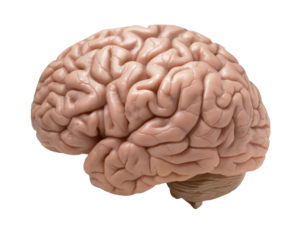A recent study, published on Nature Neuroscience, lays groundwork for potential development of first neurobiologically-based therapy for patients with autism spectrum disorders (ASD).
This research from the O’Donnell Brain Institute in the U.S. explored a specific area within the right cerebellum, called CrusI. Whilst cerebellar abnormalities in ASD patients were known for some time, the role of cerebellum in ASD has remained largely unknown.
Using imaging and data analysis, researchers have identified the region known as human right CrusI (RCrusI) to be functionally connected with both default mode and frontoparietal networks, which are usually found to be different in humans with ASD. What is more, transcranial direct-current stimulation (tDCS) targeting the area has successfully altered activity within these networks, revealing RCrusI’s modulatory role in humans.
These findings compared RCrusI connectivity in humans with that shown in mice. Whilst normal mice exhibited similar RCrusI-cerebral connections to humans, ASD model mice (Tsc-1 gene mutants) showed altered structural connectivity in these cerebello-cerebral connections.
Imaging studies with ASD diagnosed children have revealed that there are differences in RCrusI-cerebral functional connectivity compared to control group, hinting that, in this respect, mouse ASD model is comparable to humans with ASD.
Final stages of the research have explored the neuromodulatory role of RCrusI in mice. Inhibition of RCrusI neuronal activity in non-mutant mice has produced ASD-like signs and symptoms: social impairments, repetitive behaviours and behavioural inflexibility.
Most importantly, ASD model mice were shown to be responsive to RCrusI stimulation. While this relieved their social impairments, it did not address the characteristic repetitive and inflexible behaviours.
According to CDC data, autism spectrum disorder is diagnosed in about 1 in 68 children . While the symptoms can vary from mild to severe, they include social impairments and repetitive behaviours. Current therapy is very limited, focusing on adapting the environment and learning to the individual as much as possible.

Direct-current stimulation of a region of the brain known as RCrusI may alleviate some of the symptoms of ASD
This research reveals RCrusI as a possible therapeutic target for treatment of ASD. The experiments performed in this study have found similar RCrusI connectivity in both humans and mice and then showed that RCrusI stimulation in mice is an effective approach in relieving social impairments.
Even though the behavioural inflexibility and the repetitive behaviours appeared to be unaffected by RCrusI stimulation, the implications of the study, if successfully applied to humans, are huge; there are no current therapies for ASD that can address the neurobiology of the disorder. Furthermore, social impairments in ASD patients may be of significant importance when considering the quality of life.
According to Dr. Peter Tsai, who was directing the research, the reason why RCrusI stimulation in mice has not addressed all of the behavioural symptoms might be due to the fact that there are other systems within the brain involved in producing this phenotype. Behaviours may also only be fixed earlier in the development. He also added that the study has used adult mice; this might mean that the stimulation could be effective even if the treatment is not given early in life.
However, there is still a long way to go until an effective ASD therapy is developed. The paper addresses some areas that need to be studied further, including how much of an impact the altered RCrusI connectivity has on ASD signs and symptoms, whether this type of neuromodulation can be applied to humans and whether it will be as effective as it was in mice.
Prior to this research, several ASD biological correlates in humans were identified: post-mortem studies have consistently found cerebellar abnormalities and some networks within the cerebrum, the default mode network (thought to process information concerning the self and others) and the frontoparietal network (involved in attention), were found to be altered as well.